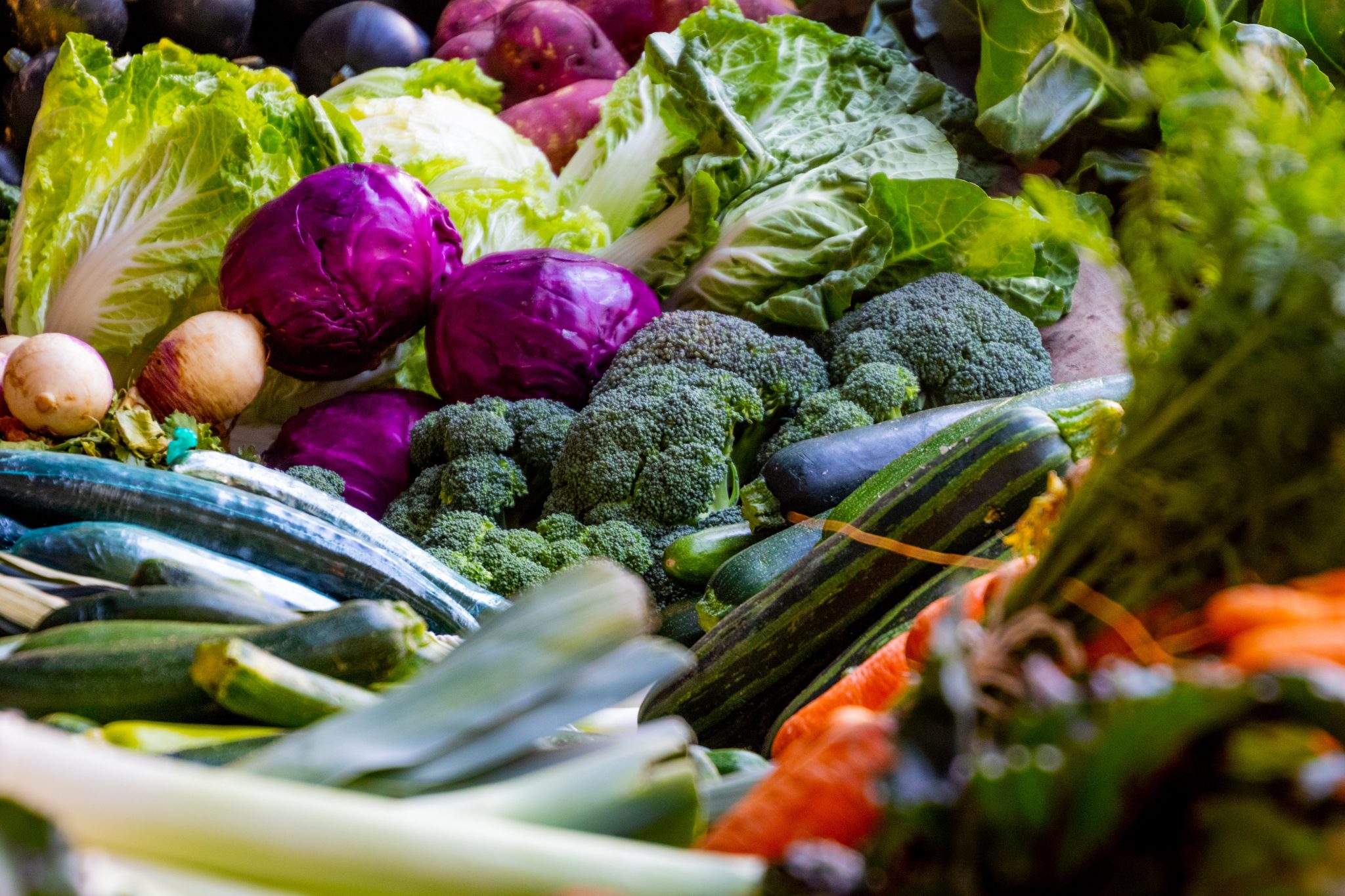Joint health is so important – so don’t wait until it’s too late to take care of them.
Joint health is hardly the most exciting area of fitness. It’s the kind of thing you only really think about in your middle and later years (women are more likely to develop osteoarthritis from the age of 40) or when something bad happens – such as your knees or hips giving out. But joint health is something that we should be taking way more seriously from a young age, so consider this your warning and thank us later.
If we eat, move and supplement correctly, we can buy ourselves years of pain-free movement – which is going to ensure that we’re able to enjoy exercise and independence well into our dotage.
Here’s why it’s so important to look after your joints, and exactly how to do it:
You may also like
How to strength train and avoid injury
Why joint health is so important
A joint is where two bones are joined together. You have two types of joints in your body: rigid (like the joints in your skull) and moveable (the ones in your knees, hips and fingers). In order to move your bones properly (and without pain), you need to have healthy cartilage which protects the bones from rubbing against each other.
Healthy joints enable you to do any kind of physical movement such as running, walking and jumping – so you can see why they’re kind of a big deal. They also make general day-to-day living easier – if your joints are unhappy, you’re likely to be in quite a bit of pain from doing normal, everyday activities. Which means that it could make sleeping, working and socialising difficult – and no one needs that.
While joints and bones differ from one another and don’t have exactly the same needs, certain things do remain the same: bone, muscle and joint health is important at any age. “Taking care of your joints when you’re young will benefit your body as it ages,” explains Jane Barrcato, registered dietitian and head of global medical science & vitamin mineral supplements at RB. “As a child, a healthy balance of vitamin D, calcium and phosphorus is important for bones to grow strong. Between 20-30 years of age, bones will reach their peak strength and your body will stop forming new bone. During this time, the correct balance of nutrients is vital to achieve peak bone density. As we age, our bones begin to lose mass, meaning it is just as important to ensure we are getting the correct nutrients such as calcium, vitamin D and phosphorus to preserve bone strength and minimise this loss.”
You may also like
Knee pain after running: a guide to why you get it and how to treat it
You’ve probably heard of arthritis, which is the most common joint disorder. It can affect people of all ages and backgrounds, for a manner of different reasons but osteoarthritis is the most common form of the disease. This painful, debilitating condition tends to happen to older people due to the cartilage between joints breaking down and leaving the bones to grind on each other.
It’s important to note that injuries early on can lead to joint problems later down the road. For instance, if you run regularly and experience knee pain, you may be more at risk of arthritis in your knees as you age. The key is to never “play through the pain”; as soon as something hurts, stop, treat and rest.

How to prevent joint deterioration
Exercise
According to Nuffield Health, exercise can help to prevent and relieve pain in your joints as well as reinforcing cartilage that can become damaged over time. GP and medical broadcaster, Dr Sarah Jarvis, stresses that being physically active is one of the most important things you can do to keep your joints healthy. But it’s not just any type of movement that matters – “it’s important to perform regular weight-bearing exercise, which is pretty much any type of exercise apart from swimming and cycling”. By doing that, you’re strengthening the muscles around your joints; even people living with arthritis are recommended to engage in regular physical activity to keep movements in the joints.
Our joints are surrounded by a thin piece of tissue connected to your blood supply called the synovial membrane. This membrane produces the fluid that lubricates your joints and supplies nutrients to the cartilage (which has no independent blood supply). When exercising, your blood pumps faster around your body – flooding the membrane with a healthy supply of nutrients which are infused into the fluid. Running, for example, forces this nutrient-rich fluid into the cartilage, and thus, keeps it healthy.
You may also like
Hip pain: the 4 best stretches for reducing hip pain if you’re sitting down all day
5 exercises for joint health
1.Running, skipping, boxing: high-impact activity requires your joints to support your body’s weight, which in turn, is going to improve their health. Keep swimming and cycling for your rest days and prioritise weight-bearing cardio and strength training on the other days.
2.Lateral band walk: target the abductor muscles which control movement of the hips and alignment of the knees. Working the hips with this low-impact exercise protects your knees, ensuring that they don’t collapse inward.
3.Single-leg glute bridge: activate your posterior chain (those back muscles) while training your hips and knees to move with care.
4.Forearm plank: engage every muscle and load almost every joint in the body – from your elbows and shoulders, to your toes and ankles.
5.Single-leg deadlift: target the hamstrings and glutes on each leg while engaging your core and stability muscles. Load the joints according to how you would hold your weight.
Remember that yoga and mobility are also great for joints too as they require you to support your own weight while strengthening the muscles around your joints.
You may also like
IT band: how tight tissue can cause hip and knee pain (and how to stretch it)
4 mobility and yoga moves for improved joint health
1. Bridge pose: lying on your back, bend your knees and put your hands on the ground by your ears. Lift your bum and slowly straighten your arms so that your entire body is off the ground.
2. Warrior sequence: begin with your legs wider than shoulder-width apart, knees slightly bent. Straighten your back leg and bend your front leg to 90-degrees with your arms straight above your head for warrior 1. Place your arms vertical for warrior 2 and take your back leg out straight, straightening your standing leg and extend your arms to the sides so that you become a standing ‘T’ shape for warrior 3.
3. Forward fold: with feet shoulder-width apart, keep your legs loosely straight as you roll forwards, unfolding your spine vertebrae by vertebrae, until you’re hinging forward from your hips. Let your fingers brush the ground.
4. Bow pose: lying on your front, extend your arms back to take hold of your feet from their outside edge. Rock forwards so that your pelvis is flat on the floor, with your arms straight and your legs, glutes, arms and shoulders all engaged.
You may also like
How to work out at home and not risk an injury, according to PT Alice Liveing
The best foods for joint health
No specific diet or foods are going to prevent or cure arthritis, but eating a balanced diet will flood the body with bone-loving nutrients. “Overall, the same principles apply to joint health as to your general health,” explains Dr Sarah Jarvis. “Doctors and dietitians recommend maximising your intake of vegetables, fruit and whole foods, and minimising your intake of ultra-processed and refined foods.” She points to studies that have shown that a whole-food, plant-based diet can relieve symptoms of osteoarthritis, while also pointing out that green vegetables (such as kale, broccoli, brussels sprouts and more) are rich sources of vitamin K, which has been linked to better joint health.
Dr Jarvis also points out that diet and lifestyle changes to reduce your cholesterol levels may help relieve symptoms or even prevent osteoarthritis, and that omega-3-rich oily fish can also support joint health. If you don’t eat fish, “try including more hemp seed, flaxseed, walnuts and beans in your diet”.
When I think of bones, I tend to think about calcium and for those of us who are plant-based, that can be a tricky nutrient. We’re brought up to believe that cow’s milk makes our bones stronger – so what if you don’t drink the stuff?
While calcium “is crucial for bone health,” Dr Jarvis says, “it does not have the same importance in terms of joint health”, and while all genders become more susceptible to osteoporosis as we age, we can up our calcium intake through fortified plant milks, some tofus, tinned fish, fortified orange juice and some green vegetables (albeit at quite a low level). “Choosing foods from all the food groups helps ensure that you consume the nutrients your body needs to stay healthy. Any time someone does not consume from a specific food group, they will be missing some nutrients that would help support their overall body health,” warns Jane.

The best supplements for joint health
Most of the vitamins and minerals we need can be found in a balanced diet, with the exception of vitamin D, which is difficult to get enough of from diet alone. If you’ve got aching knees post-run or have a family history of dodgy joints, listen up: a study of collagen supplements in young athletes found that the supplements significantly improved joint pain at rest, while walking, standing, carrying and lifting, than compared to the placebo. This effect was more marked among people who had knee pain when the study started. “If you are prone to joint problems or other people in your family have osteoarthritis, you might want to consider taking supplements to prevent rather than treat joint issues,” Dr Jarvis concludes.
FIGHT Bone Strength gummies, £27.99
These berry-flavoured gummies contain vitamin D, calcium and phosphorus to support healthy bones. They’re vegan and for every bottle you buy, FareShare will redistribute one meal to someone in need.
MyProtein Glucosamine HCL & Chondroitin, £21.99
Glucosamine is a key component of cartilage and joint tissue. As it’s mainly found in shellfish, it’s a nutrient that’s often quite hard to get a good dose of from food alone so if you’re eating plant-based or just not a massive mussel fan, you might want a top up – especially if you do a lot of high impact sport.
LQ Joint Care Powder, £34.99
The cherry-flavoured powder supplement contains 5000mg of marine collagen per serving. Infused with glucosamine, vitamin C and E, hyaluronic acid, ginger extract, magnesium and copper, it assists with normal collagen formation for the normal function of bones and cartilage.
LQ Joint Care MAX, £27.99
This liquid food version contains 10 x 50ml bottles which can be taken daily, either on its own or added into a drink. Dr Jarvis explains that “taking supplements as a liquid makes them more effective with faster absorption, higher optimisation and they are easier to digest.”
SevenSeas JointCare Supplex, £19, Boots
Packed with vitamin C and D, manganese, glucosamine, omega 3 and turmeric, this is a jam-packed joint remedy. Turmeric takes down inflammation while vitamin C contributes to normal collagen formation. Vitamin D helps to maintain normal bones while manganese contributes to the normal formation of connective tissue.
Follow @StrongWomenUK on Instagram for the latest workouts, delicious recipes and motivation from your favourite fitness experts.
IMAGE: Getty
Source: Read Full Article